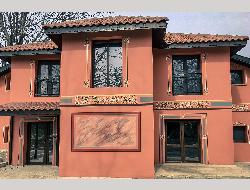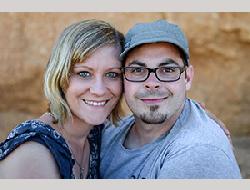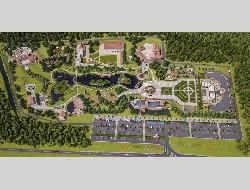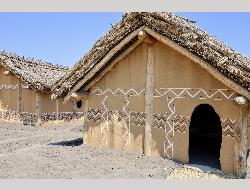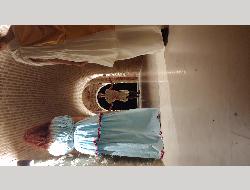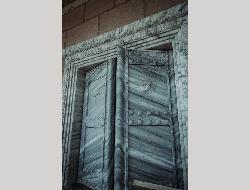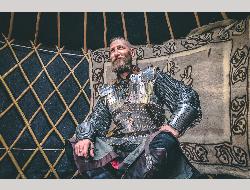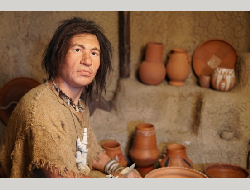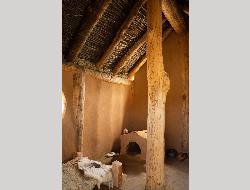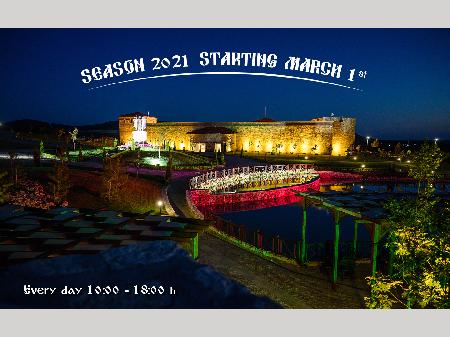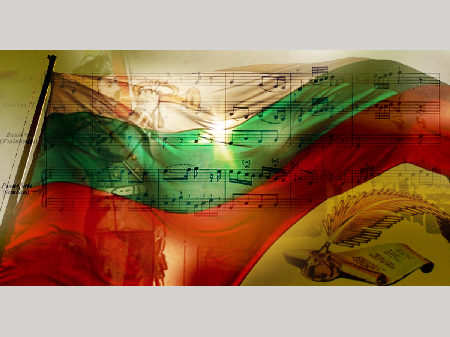On June 22, 2019, Historical Park will open near Varna in Bulgaria. On an area of around 13 hectares, visitors will be able to travel back in time in six different eras up to 10,000 years ago.
Vacation in Bulgaria with Education: Off to the Historical Park near Varna!
An archaeological (amusement) park in Bulgaria. Not a museum, not a real archaeological or historical site, but a place that represents the most important eras of Bulgarian history in one place.
That sounded interesting to me as a former archaeologist. Of course, I would like to see the original places, but I also found out that this country has historically so much to offer that even in a week's round trip from Black Sea coast to Central Bulgaria we could only feel and see a hint of history and places. Even though we focused on it.
So it is almost impossible to get a cultural overview in an average travel time of 14 days, especially if you still plan beach days on the Black Sea coast.
The large-scale project “Historical Park” will be completed in separate phases. The first phase will open on June 22, 2019. Here the visitors will be able to travel back in time to the Neolithic and the Chalcolithic Age. The entire park with all its different historical phases will be built on an area of 13 hectares by 2022. In addition, right next to it are planned a horse riding center, a congress center, as well as a hotel and holiday homes. All will take space on an area of approximately 50 hectares (approximately 70 soccer fields).
So what can I experience in Historical Park near Varna?
Historical Park shows segments of Bulgarian history and depicts these representative ages in six different settlement replicas.
Time travel back to the Neolithic era and the Copper Age (6,000 to 3,000 BC)
The Neolithic era and the Copper Age are marked by drastic changes in human behavior. People began to change from a hunter-gatherer culture, which was shaped by a nomadic way of life, to a sedentary way of life. Animals were gradually domesticated, livestock was introduced, and cereals were grown. In addition, in the copper age people began to process metal.
They also produced ceramics for cooking and storing food and initially lived in so-called mine houses.
The houses, and everything in them, have been authentically reproduced with the help of scientists. So you also get a great insight into the house construction at that time.
The Thracian Period (2,200 to 29 BC)
In this part of the park visitors can find Thracian temple and tombs and travel back in time when Spartacus and Orpheus lived. The Thracians took part in the Trojan War and formed the origin of Bulgaria. Also, the Thracian Temple is very impressive, because in the Park one uses only original materials. If the columns in the real temple were from marble, in Historical Park they are also made from marble.
I was particularly impressed by a heavy marble door at the entrance to the temple.
Normally, such things are made from materials that only look like marble. Not here. In Historical Park everything is authentic. For example, we have seen such a nice door in the tumulus of Seutes III in the Rose Valley.
The domed tomb from Pomorie, which contains Thracian as well as Roman elements and probably belonged to that time, has also impressed me a lot because it is represented here in the park in real size.
The Roman era (29th BC to 5th century AD)
In this area there will be a Roman villa and next to it an entire Roman theater, where various performances will be held. The Romans laid the foundations for many Bulgarian cities. The Latin language and Roman culture shaped people during this period. In Hisarya, for example, you can still visit the well-preserved Roman thermal baths. To this day, people use the hot springs for healing and spa procedures.
Slavic and Proto-Bulgarian era (5th to 7th century)
During the migration period, many different folks crossed the territories of today's Bulgaria. The Slavs left the greatest influence. The mighty horse-riding folk of the Proto-bulgarians also moved through the area at the same time.
The ruler Kubrat united various tribes and thus formed the so-called Old Great Bulgaria.
Bulgaria in the early Middle Ages: First Bulgarian Tsardom (7th to 11th century)
During this time, after long wars, the first peace treaty between Byzantium (Emperor Constantine V) and the Proto-Bulgarians was signed. 681 is considered as foundation year of the First Bulgarian Tsardom with capital Pliska, located in today's northeastern Bulgaria. In this period Christianity was declared as official religion. Art, culture and literature flourished in the „Golden Century“. The Cyrillic script was also introduced at this time. In this area of the park, visitors have the opportunity to learn the oldest Slavic script "Glagolitsa".
Second Bulgarian Tsardom (1185 to 1396)
After the Byzantine rule, Bulgaria experienced a second heyday. In this last section one can see a settlement like Tsarevets in Veliko Tarnovo. It is a phase of cultural and economic growth. Progress can also be seen in construction and architecture.
See, feel, smell, taste - actively understand and experience the historical past
There are many museums in the world. If you're not a fan of archeology and history like me, you're usually bored by the 10th showcase latest. Even if the museums are well structured, have a guide or work with the most modern technology in the exhibition rooms, I know well the feeling that what is experienced, read and, above all, learned is quickly forgotten. For the majority of people the situation is different if they can experience and try things for themselves.
Interactive stations - historical craft
The wooden shaft of the stone hatchet sits rock solid in the deep recess of the cutting tool. Little has changed in appearance. What machines do today in the manufacture of a hatchet or an ax was previously done by hand. The indentation, or the hole, in which the wooden shaft is inserted was drilled into the stone by hand.
Within the interactive stations visitors can experience what amount of physical effort and time is needed for this historical craft.
Today you go to the supermarket and buy your flour in practical 1 kg packs. Do you have any idea how long it takes to grind 1 kg of flour by hand on a grinding stone? In my own experience, most people give up after making a handful of flour.
But exactly such experiences, which are also great for children, help us better understand the historical past, and also get a better understanding of processes that appear natural today.
Try archery – like a real warrior
Here you can try everything yourself. Reenactment performers and trained archers show you how to do archery. I take my time, inhale and exhale ... and miss the target. By the fifth shot, the arrow finally goes to the edge of the golden center. The idea of doing the same at full gallop on a horse's back quickly makes it clear that it takes a lot of practice.
The visitors can also take part in small tournaments.
Smell and taste - a culinary journey into the ancient world
At the interactive stations in the park, you can not only learn how jewelry or tools were made in ancient times, but also what the food tasted like at the time and what actually came on the table. Here traditional dishes from the ancient world are prepared in an authentic way.
So of course the food is not cooked on a modern electric stove, but e.g. over an open wood fire, in a copper or bronze kettle. You won't find any flavour enhancers or artificial flavourings here.
Thus the visitors can smell and taste, how a stew tasted 2,000 years ago or a spelled bread, which the Thracians knew back then. I can assure you from my time as a museum educator: there is nothing better!
There are also traditional Bulgarian dishes that are still passed down from generation to generation.
Raptor shows in Historical Park
Hunting with falcons has a long history in Bulgaria and can be traced back around 12,000 years. Today it is prohibited by law. During the demonstration of the Harris Falcons we learn a lot about these proud animals, their rearing (no wild catches) and their training.
They are presented to guests at air shows in the historical park, so that the visitors get an impression of the great tradition. Of course there is no real hunting!
Other attractions in Historical Park
Visitors will be able to put on traditional clothes, rent a small boat to relax on the large lake in the center of the park, or try out traditional martial arts. One uses replicas of historical weapons and an experienced trainer shows you how to use them correctly.
If you want, you can take part in a simulated archaeological excavation and there you will learn that archeology has nothing to do with what Hollywood heroes or computer generated women in shorts would like us to believe.
Living like in antiquity near Varna - the holiday homes of Historical Park
Another highlight of Historical Park is the accommodation in the form of holiday homes, which can also be booked as a family, because in most cases they have two bedrooms with two beds each. I would have preferred to move in straight away, because we found the mixture of the antique elements, combined with modern amenities, particularly nice.
Here you can feel the love of detail and the desire to offer guests an authentic living experience without having to forego modernity. There is furniture such as the bench, which was made according to the historical model or the wall lighting with decorative elements from the Thracian period.
However, no one has to extinguish an open fire as a light source when going to bed, because light switches and light bulbs do this. The kitchen design has also historical elements, but at the same time it is combined with e.g. a modern kitchen sink. The bathrooms are also modern, so that nobody has to dig a hole in the floor here.
It is this combination of useful modernity and antique charm that makes your stay so special. The holiday homes are very near but still outside of Historical Park, so that you can also experience life in a Bulgarian village.
Are you looking for an exceptional accommodation option during your Bulgaria vacation? Here you are exactly right.
Is it worth visiting Historical Park near Varna?
Absolutely yes! When we checked the park in March 2019, many areas were still a large construction site. The fortress in the entrance area was built and some Thracian temples and the 1: 1 reconstruction of the dome tombs were almost finished. I was totally thrilled because I didn't know anything like that on a scale.
Scientists, such as historians and archaeologists, work hand in hand with the park management to achieve a result that is as authentic as possible (taking into account modern conditions such as fire protection, etc.).
The Historical Park is a revolution in Bulgaria's cultural tourism because it offers visitors active and interactive experiences and insights into past cultures.
The park is also not intended to be a museum with rigid exhibits, but rather to make history tangible in order to convey a better understanding of traditions. In the “Neolithic Village” in Neofit Rilski, which is supposed to give a foretaste of the large Historical Park, I was able to convince myself that what is being created here on a big scale is really unique.
Autor: MIRIAM UND JOHANNES
"Source": https://northstarchronicles.de/historischer-park-varna-bulgarien/



